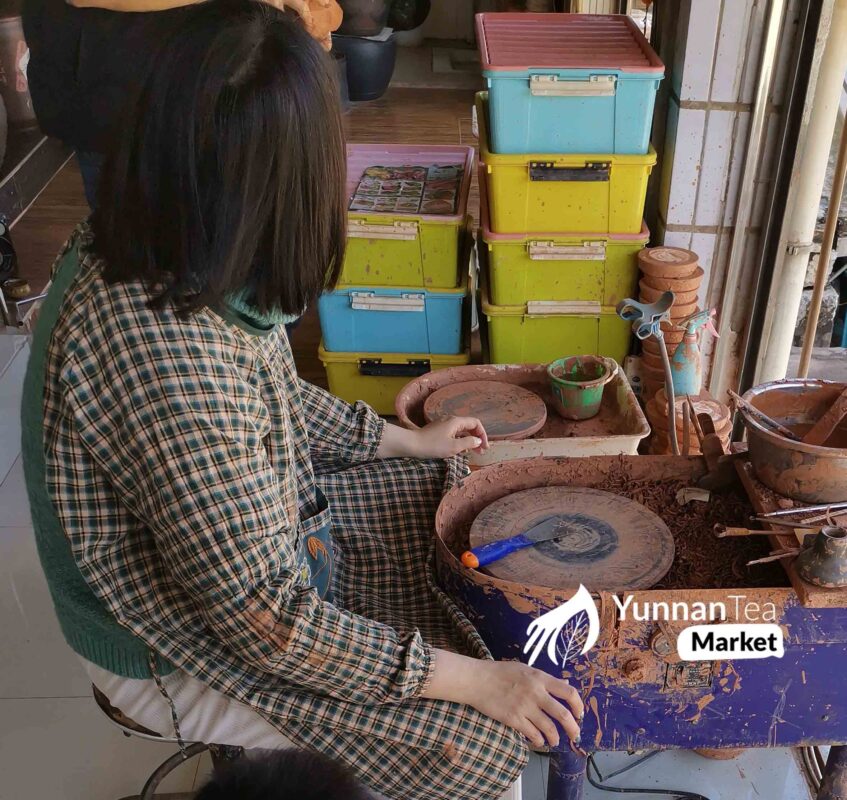Jian Shui Zi Tao, Zisha
About Jianshui Zitao Pottery
Recently my wife and I took a trip to Jianshui.
Since she knows about my teapot obsession, she encouraged me to go there during the Chinese New Year and learn in-depth about Zitao pottery.
Travelling there was easy because we live in Kunming, so it is a short trip.
Jian Shui
Jianshui County, located in the south of Yunnan, is one of the counties under the jurisdiction of Honghe Hani and Yi Autonomous Prefecture.
It has a history of more than 1200 years old and still preserves many ancient buildings.

The traditional craftsmanship of Jianshui purple pottery developed during the Song, Yuan, Ming and Qing dynasties, emerging gradually from the ceramics industries. It is the end result of many years of accumulated cultural knowledge, reflecting the long history of China. It is a remarkable product of the melding of Han and Yunnan minority cultures.
At present, it is one of the four famous pottery in China.
As mentioned above, It has a long history in making pottery but mainly in making cooking pots (Guo Qi) and big jars used for different purposes.
What makes Jianshui pottery stand out from others?
Jianshui pottery focuses on meticulous decoration.
It uses Chinese calligraphy, painting, engraving/filling with multi-colour clay, glaze-less polishing and other decorative techniques.
There is a saying: “Engraving/filling is a skill; calligraphy and painting are the souls of Zitao pottery.”‘
How is Jianshui Zitao pottery made?
In most cases is Wheel-Thrown, meaning made by hand on a potter’s wheel, excluding teapots with sharp angles or square ones.

Making these (sharp angles or square ones) by hand requires high skills, so they are not so common.
If you find square/sharp angles Zitao teapots, more often than not, potters use a mould to make them.

About the price of Jiashui Zitao Pottery
One of the factors that affect the price the most is artistic work.
More specifically, painting, calligraphy and carving.
In particular when the artists have a good reputation and are famous.
The other thing that affects the price is firing the products in a firewood kiln.
The success rate of firewood kiln is much lower than other types of kilns.
The firing time is way longer than electric and gas kilns; the use of material (wood) also increases the price.
The glaze colour and quality of the finished product, after firing, also do.
Firewood kiln requires high expertise and is labour intensive.
That is why it has such an impact on increasing the cost of the finished product.
Jianshui Purple Clay
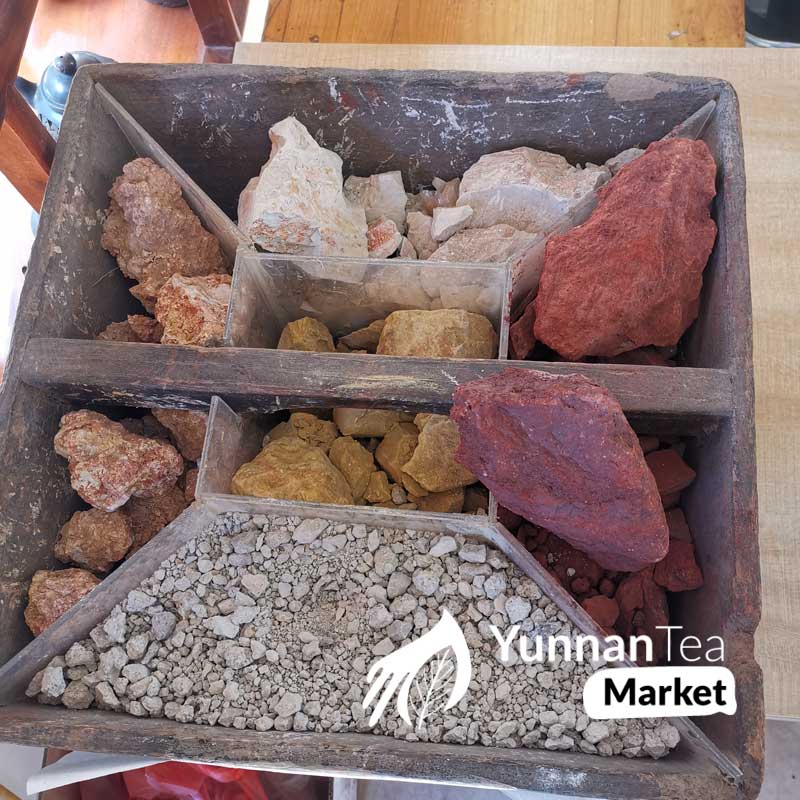
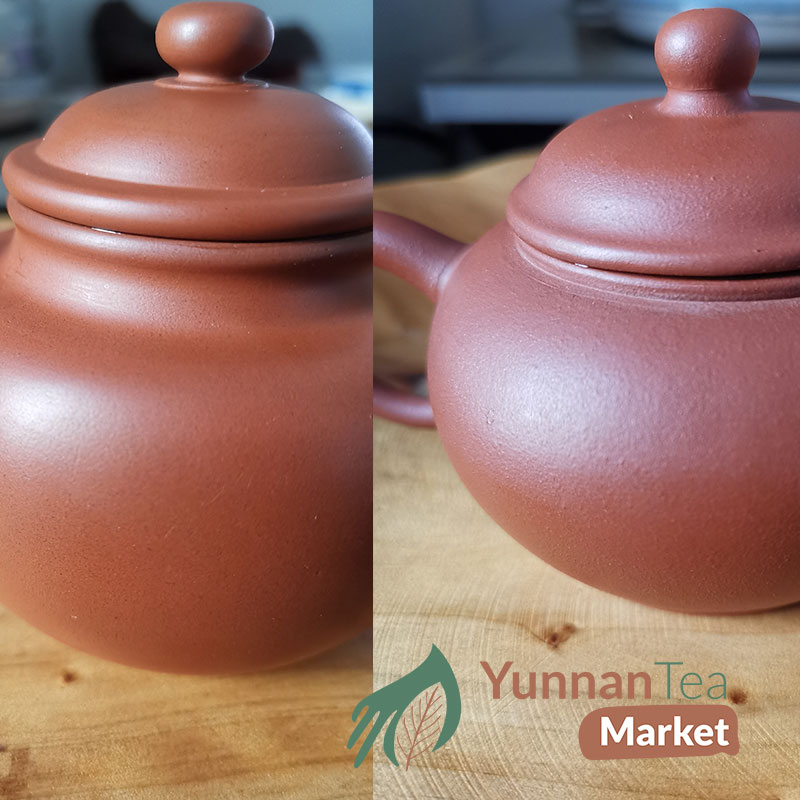
They remove the sand because the custom is to polish the Zitao pottery piece; if it has a sandy texture after polishing, the surface appearance would not be even.
There will be holes on the surface of the clay.
Once the clay has no sand, the mud in the pool is precipitated and pressed with a machine into big cakes.
This pressing removes the water excess and some of the air bubbles inside the clay.
After this, they put the big cakes into another machine that kneads the mud.
And compacts it into a cylindrical shape (like the one in the picture below) to remove further the air bubbles and make it easier to handle.
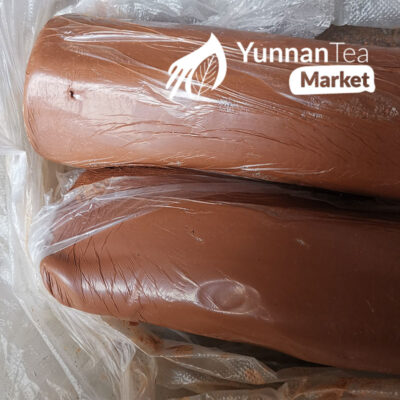
After this, the clay is ready to sell in these cylinders.
The pieces are wrapped in plastic to prevent the clay from drying.
Clay blending
The most common clays in Jianshui pottery are Red and White clay.
The standard blending proportions are:
Red clay: 50% Five-color soil, 15% Yellow soil, 15% White soil, 10% Green soil and 10% Purple soil
White clay: 75% White soil and 25% Grey soil
These values are for reference only.
Specific proportions can vary depending on different purposes.
For example, for higher temperature resistance during firing, White soil (with high silicon and aluminium content) is added.
They add purple soil (with high iron content); to make the blend more colourful.
The different colours of Jianshui Zitao pottery
The different colours are related to the firing method and the clay used.
In Jianshui pottery, if the piece has a red colour after firing is because Red clay (the blended clay mentioned in Clay blending ) and oxidation firing were used.
Depending on the oxygen levels during firing, the potter will obtain different tones of red.
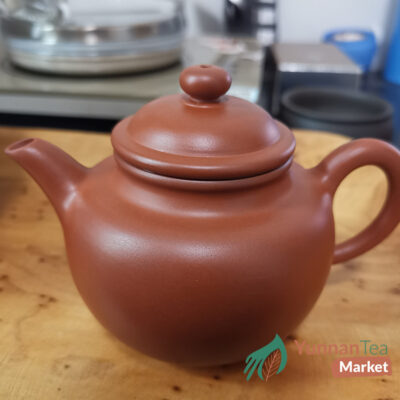
If the finished product is black after firing, is because Red clay (the blended clay mentioned in Clay blending ) and reduction firing were used.
The scarcer the oxygen, the closer to black is the colour.
When the concentration of Carbon Monoxide reaches a certain level, Bronze and uneven colours may appear.
An Oxidation-Reduction reaction is a chemical process where electrons move between atoms. This reaction occurs during firing.
Depending on the firing method the potter uses. The final product will have a different colour.
If you would like to learn more in detail about oxidation and reduction firing, I leave a link with some good information: Demystifying-the-Reduction-Firing-Process
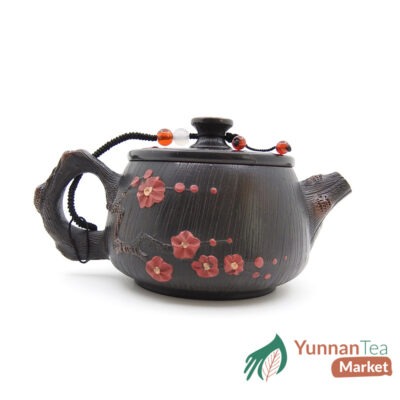
It is worth mentioning that the black colour produced by reduction firing only occurs on the surface of the finished product.
If the object is ground, its authentic colour will appear, red.
Grinding and polishing are also commonly used to change the colour and appearance of Jianshui pottery.
Potters also usually use these techniques to obtain different tones of Bronze or patterns (after reduction firing).

Comparing Zisha and Zitao
I thought of comparing and contrasting Zisha and Zitao.
In this way, it might help to understand Jianshui Pottery’s features.
Craftsmanship: I found that nearly all Zitao pots that I have tried, even cheap ones, can pour water fast, have a tight lid fit and have no water leaking from the rim.
Potters ground the lid wall (and the inside of the teapot mouth) with Emery sand to achieve this tight-fitting.
After grinding, the clay on the inside of the lid wall (on reduction fired pots) looks reddish.

On the other hand, when it comes to early Zisha pots (the 1980s and backwards).
The quality requirements for teapot lids were the opposite of the present one.
In particular, teapots made by Factory One (run by the government).
If the lids were too tight, they didn’t pass the required standard.
In the past, Zisha teapots were fired only one time。
If the lid was too tight during firing. It was easy to stick to the teapot’s body.
During the 80s, due to economic development, Taiwan’s* Zisha teapot market evolved from a daily tea tool to a collectable product.
Because of this, the craftsmanship standard became higher.
From then on, the standard requires no gap between the teapot mouth and lid.
Since Zisha teapots have a shrinkage rate after firing, if the lid was too tight, they ground (by hand) with Emery sand the teapot’s mouth and fired it for a second time.
*Note: At that time, “Factory One” exported many of its products to Taiwan, Hong Kong, Japan and South-East Asia.
In the 1990s, Jing Dian Tao Fang* invented the first mouth/lid grinding machine that made the teapot lid tighter and smoother (when turned). After grinding, they refired the teapot, solving the problem of the loose lid fitting.
*Note: Yixing Factory One was restructured from state-owned to private. JDTF was formerly known as a joint branch of Yixing Factory 1.
To summarize, when it comes to craftsmanship (only referring to pouring speed, tight lid fit without leaks).
Pouring speed*, no leaks and tight lid fit; Zitao pots are superior to old Factory 1 Zisha teapots (from the 1980s backwards). Factory One teapots, aside from the explained above (loose lid-fitting), usually leak water from the rim. And sometimes the pouring is not that fast.
In the case of Zisha, the spout, lid’s knob, handle alignment, covering the hole to see if the water stops, etc. It is irrelevant.
Therefore, I am not mentioning it in the comparison unless you pay a lot of money from a famous artist. In this situation, you might look more in detail. But even if it is the case, craftsmanship flaws may exist too.
As I see it, when buying modern teapots, the biggest concern should be to find a teapot with pure clay, meaning no chemicals.
*except for Pigeon Beak pots that usually have fast pouring
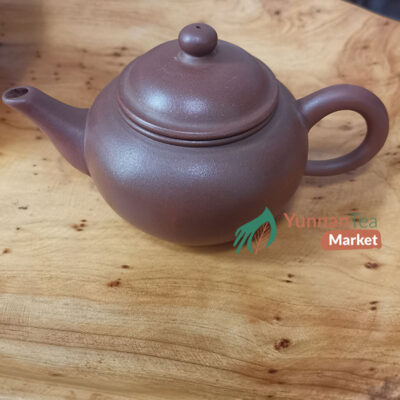
If we talk about modern Zisha teapots, some have a good lid fit, no leakage and fast pouring speed. Others perform poorly.
I dare to say JDTF pots have a perfect lid fit. But I have encountered some pots that pouring speed is not that fast and leaks water from the rim.
Therefore, compared to modern Zisha teapots’ craftsmanship, including JDTF ones, Zitao is also superior.
As I explained before, many craftsmanship characteristics are unimportant when looking at a teapot. The one that matters the most is water pouring speed. Even the loose lid fit can be dealt with some adjustments when handling the teapot.
So I just mentioned these characteristics to compare Zitao and Zisha’s craftsmanship differences.
Aesthetic: When it comes to the teapot’s shape, Zitao pots are not as elegant as Zisha ones. If you look at the spout, handle and lid in most cases, not all, Zisha teapots look better.
What is the reason behind this?
As explained at the beginning of the post, their history in making pots is not as old, except for cooking pots, flower vases, etc.
However, they started making teaware due to the increasing market demand.
So compared to Yixing, Jianshui’s history in making teaware is not as old.
The following teapot is from a famous maker. The filled engraving work is beautiful. However, the teapot’s shape is not that elegant if you look at the details.

Comparing Zitao and Zisha material
As explained above, Zitao clay has no sand, Zisha does.
Zisha has different grain sizes in the finished products. After the workers grind the ore into powder, they sieve it to the desired grain size.
The higher the number of the mesh, the smaller the grains.
Let’s get more into detail about the mesh sizes.
Zitao:
Teapots use 250-300 mesh, and may even reach 400 mesh.
Water jars and tea caddies* use 200 mesh.
*Note: Zitao tea caddies preserve the aroma well; they are great for storing Puer tea; due to the high density and thickness of the clay, the air permeability is lower compared to Zisha ones. So you have to choose according to your needs. Zitao caddies are cheaper than Zisha ones.
Zisha:
Hongni, Duanni and Zini teapots typically use 40-60 mesh.
Zhuni uses 80-100 mesh.
Tea caddies 20-40 mesh depending on size.
As you can see, the sieve used in Zitao has a much finer mesh.
Therefore, the finished Zitao products have a higher density compared to Zisha.
The firing temperature of Zitao (red clay blend mentioned above) is around 1150 °C with a shrink rate between 18-20%. White clay has a higher fire temperature, 1200°C.
The temperatures mentioned are when using electric or gas kilns. Firewood kilns have a higher temperature.
Zisha has a broader range of firing temperatures between 1100-1200 °C. There are different categories of clay and some subgroups in each of them.
I thought it was interesting to compare and contrast Zhuni with Zitao because it is also a high-density clay.
Zhuni has a firing temperature of 1200 °C and a shrink rate between 20% and 25%.
The finer the grains in the clay, the greater the shrinkage ratio after firing, which is the case for both clays, Zitao and Zhuni, if we compare them with other Zisha clays.
In both cases, the finished products have a high density which helps enhance the higher notes in the tea aroma.
Which one preserves the aroma to a higher degree?
You can check how they compare when brewing in this post, comparing brewing results Zitao, porcelain and zisha.
Conclusion about comparison
Zisha and Zitao are different; this doesn’t mean that one is better than the other.
Clay is just a tool; as long as the clay is good (pure with no chemicals) and you pair it with a tea that matches, you will benefit from its use.
Zisha clay is more porous than Zitao. So if you are trying to round up some undesired flavour and soften astringency Zisha is more suitable.
Zitao clay has a higher density and is less porous. So It will do a better job preserving aroma and enhancing the flavours more than rounding them up when compared to Zisha.
However, will definitely tame some undesired flavours when compared to porcelain as you can see in my comparison, comparing brewing results between Zitao, porcelain and zisha
I have tried different Oolongs, Puer tea (semi-aged and aged), White tea, Heicha and our Yesheng Gushu Red Tea with good results.
I don’t recommend Zitao for Green teas or young Sheng Puer teas with high bitterness and without a decent amount of return sweetness. The density of the clay and its long heat retention (high heat capacity) will increase the bitterness of these teas.
About our trip
As we travelled during the Chinese New Year, some places were closed, and the factories that processed the clay were not operating. So we couldn’t film the process where they make and refine the clay. We definitely will in the near future.
However, we did find a small factory that makes good teapots. And we are going to offer some of their products.
Some of the products we will be offering are the classic ones, like the Shipiao above. Some are perhaps less common like the Pot fired in an oxidation environment above.
I like classic style Zitao but also the one like the Red Pot. Because it preserves the character of the clay (better than polished pots) and you can see how it changes after seasoning.

